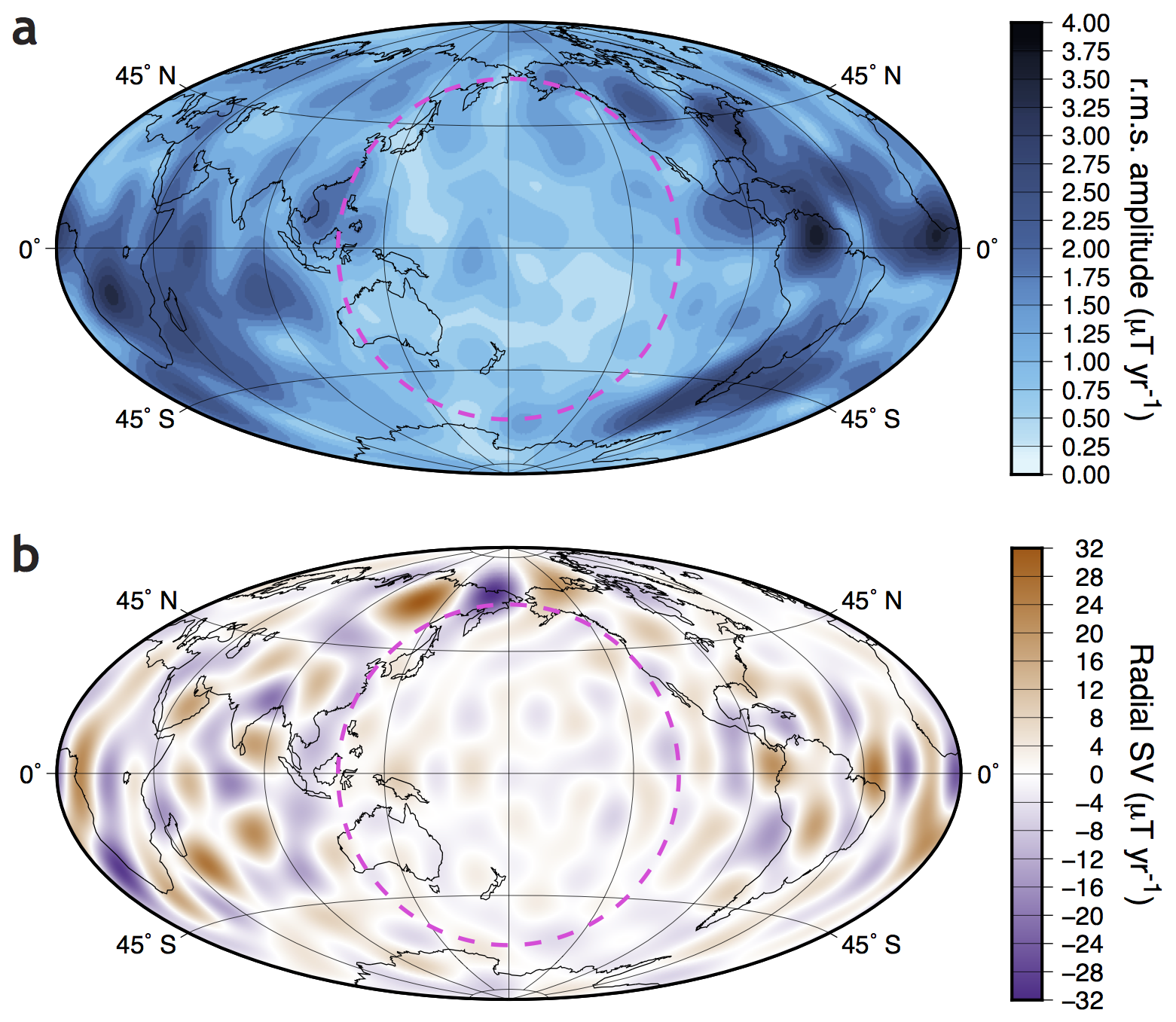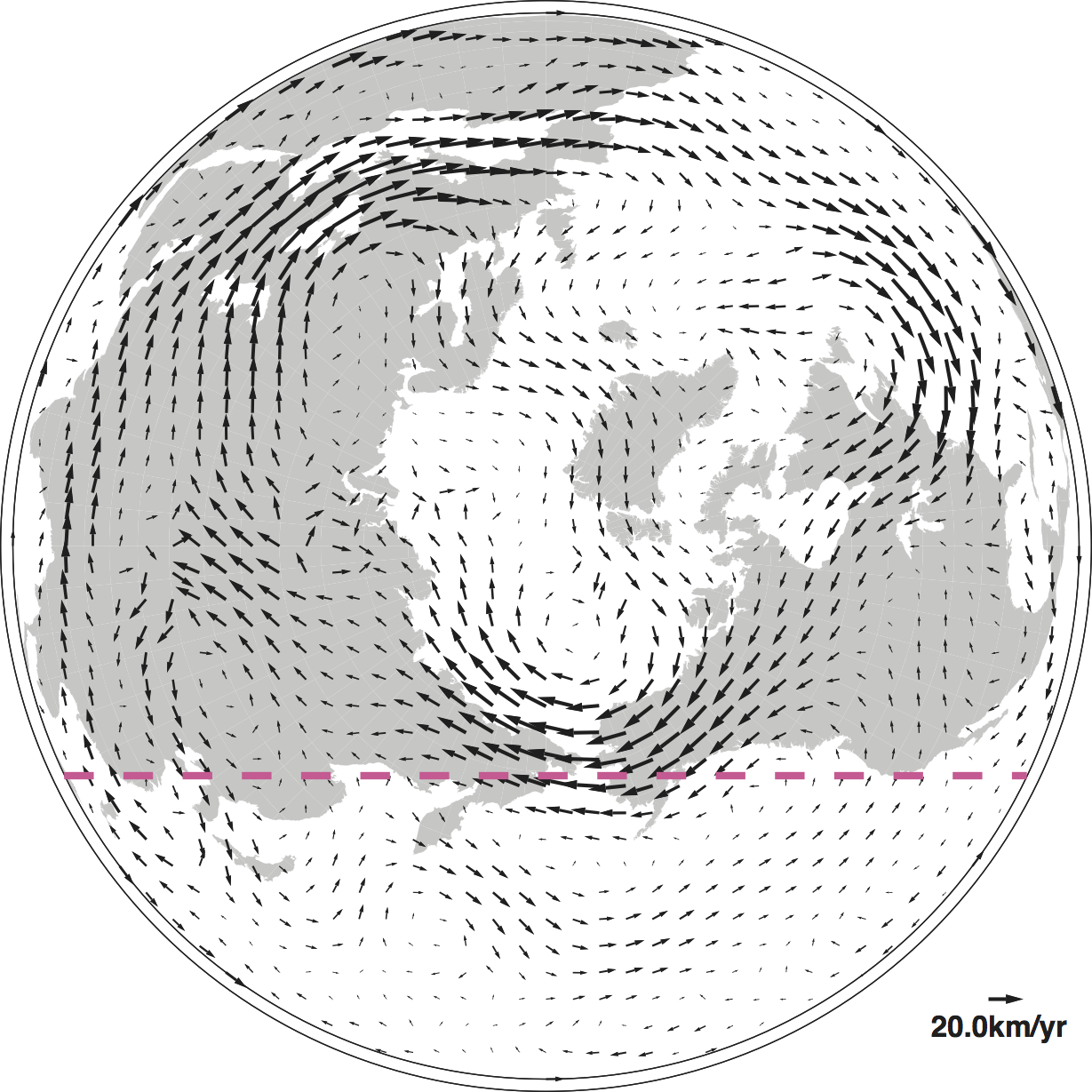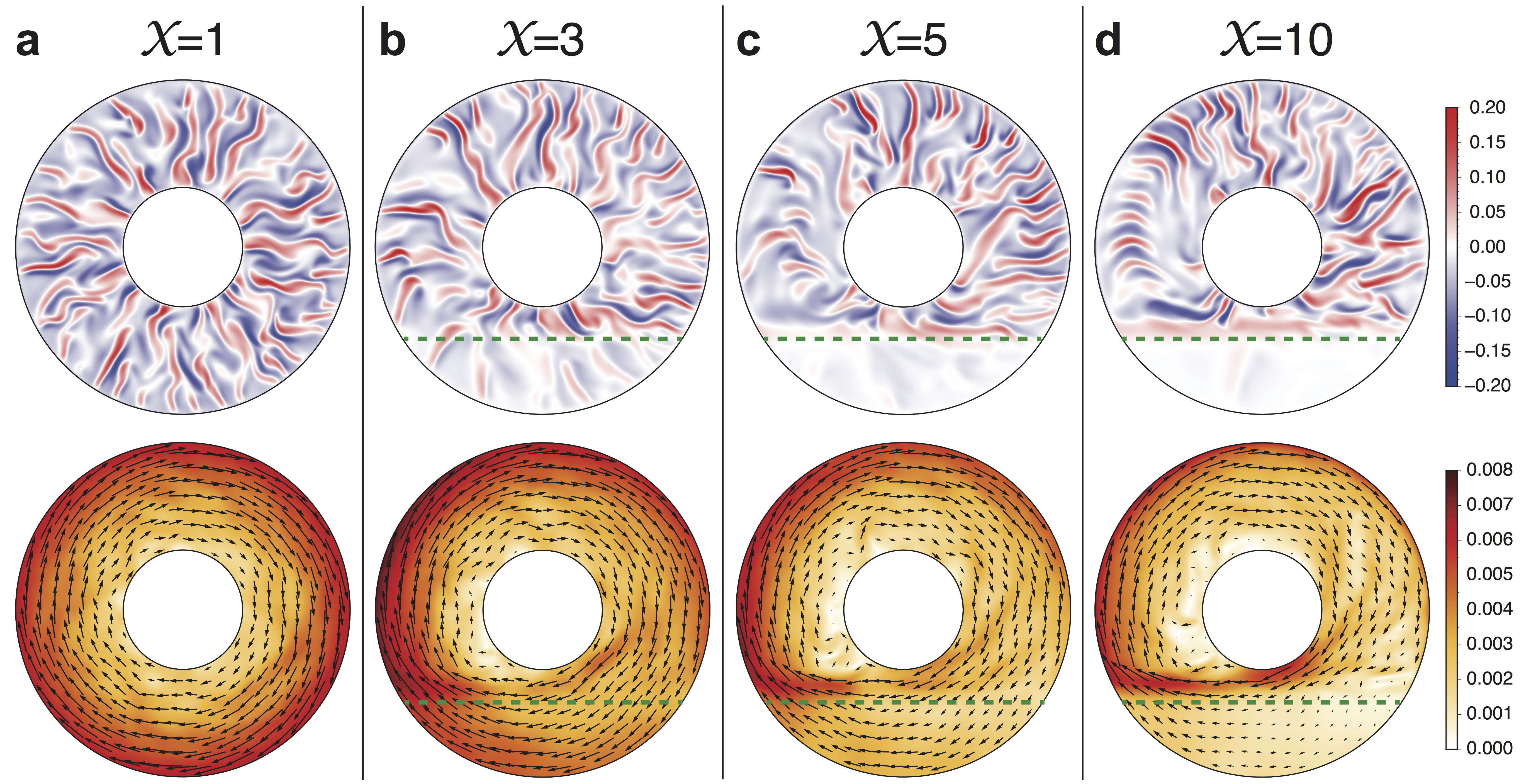The enigmatic magnetic field of the Earth: why its temporal variation is weaker over the Pacific?
Reconstructions of the Earth's magnetic field over the past 400 years show that its temporal variation (commonly called "secular variation") has been lower in the Pacific region. This geographic peculiarity was first noticed in the 1930's. There was a belief originally that this was perhaps due to an artifact from a geographic bias in data quality. However, rather than debunking it, global satellite measurements in the past few decades have confirmed and strengthened the case that the secular variation over the Pacific is weaker (see Figure 1).
But what causes this? Close to 90 years after it was first reported, a proper explanation is still lacking. Time variations of the magnetic field are caused by flows in the uppermost region of the fluid core which are advecting and shearing magnetic field lines. Models of core flows feature a westward planetary scale gyre which is eccentric and avoids the Pacific region (see Figure 2). The first order reason for the lower secular variation in the Pacific is then simply because core flows are weaker in this region. But why is this the case and what causes the offset of the gyre?
A dynamical coupling with the lower mantle is a possible explanation. In a recent study with Colin More (PhD student), we showed that lateral variations in electrical conductance at the base of the mantle can provide the answer. A larger conductance under the Pacific exerts a larger electromagnetic drag on flows, slowing down the local eddies. It also leads to a deflection of the planetary gyre away from the Pacific. Both of these features are predicted by numerical models of the dynamics (see Figure 3) and agree with observations. Although the nature of this higher conductance remains unclear, these results suggest lateral differences in the material properties or topography of the lowermost mantle, and therefore it offers clues and constraints on the composition, evolution and dynamics of the mantle.

Figure 1:(a) The mean intensity of the radial component of the SV at the CMB over the time period 1590−1990 from the gufm field model. (b) The radial component of the SV at the CMB in 2015 from the CHAOS-6 field model. In both cases, the r.m.s. amplitude over the Pacific (pink dashed circle) is approximately half of that elsewhere. Figure taken from Dumberry and More, Nature Geoscience, 2020. |

Figure 2: The westward, eccentric planetary gyre in Earth's fluid core (time-averaged over the period 1940–2010) projected onto the equatorial plane inside the core. Northern Hemisphere continents, projected onto the CMB, are shown for geographic reference. Figure taken from Dumberry and More, Nature Geoscience, 2020. |

Figure 3: Snapshots of the axial vorticity (top row) and time-averaged flow maps (bottom row; colour scale indicates flow speed, arrows show direction) from numerical models. The electromagnetic coupling in the Pacific region (bottom of each planform) is a factor 1 (a), 3 (b), 5 (c) and 10 (d) times larger than eleswhere. Figure taken from Dumberry and More, Nature Geoscience, 2020. |
paper on this topic
Dumberry, M. and More, C., 2020,Weak magnetic field changes over the Pacific due to high conductance in lowermost mantle, Nature Geoscience, 13, 516-520.

